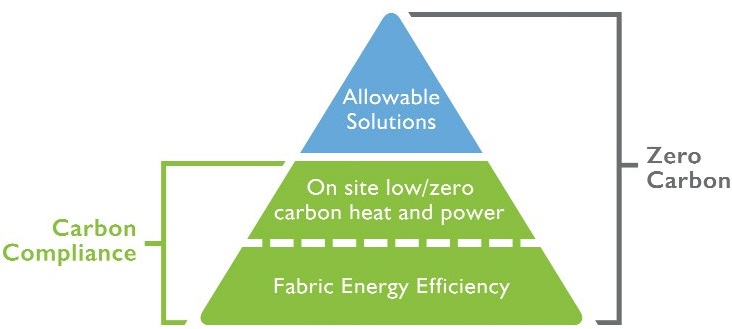Zero Carbon Housing
As global warming became one of the most discussed topics on the global political scene for the last decades, some legal measures were suggested, adopted, amended, and implemented by governments all over the world. As far as the United Kingdom is concerned, the government came up with efficient plans and agendas to reduce to mitigate the effects of climate changes. One of the measures that were discussed in 2006 was the carbon housing program which was supposed to bring about on-site energy savings of homes and dwellings from 2016. The Wind and solar power were to be used for heating, lighting, hot water and air conditioning. This approach would save carbon emissions and improve the standard of living of the British population. It was supposed to start in 2016 in order to conform with the Climate Change Act’s requirements and provisions which demand an 80% carbon reduction that is emitted from homes and dwellings by the year 2050.
A zero carbon home means a house that is able to generate the power it uses, and in that way, carbon dioxide emission is prevented.

What is Zero Carbon Housing?
Zero carbon housing is used to describe high energy efficiency of homes and dwellings which emit minimum or zero carbon. The carbon footprint, which becomes more and more prominent on the global scene, would equal zero of a home that relies on low-energy sources to cover for the day-to-day needs in order to save energy. The carbon footprint is just the measuring unit of gas emissions that are released into the atmosphere as a result of home energy use like heating, appliances use, etc.
Zero carbon housing would save a lot on electricity bills, heating bills, and others since it would not depend on the generation of the highly atmosphere unfriendly power suppliers.
The UK Government and the Change of Heart
Despite their initial enthusiasm in 2006, the UK government seemed to have changed its opinion regarding the zero carbon project implementation and introduced certain changes to the Infrastructure Bill. The government now argues that it would damage the house-building industry and that the plan was not well thought-through. It was a bitter pill for many environmental organizations and activist who believe that there is no point in building homes which will come with high energy bills when there is an eco-friendly way to deal with the climate change. They firmly believe that the cancellation of the program means support for wasting energy, more revenues from high bills, and further dependence on energy imports from abroad, like gas from Russia.
A total of 1/3 of all gas emissions come from homes and energy-consuming house activities, and if the government proceeds with the cancellation of the zero carbon housing program, it could easily climb to 50% by 2050.

The Carbon Free Homes- How Would They Look Like?
The carbon zero emission homes require a precise building plan since they need a heating system that extracts the heat from the ground, also insulated walls and triple-glazed windows. It all comes down to a system and equipment that relies on micro-generation of power. The solar roof panels would provide electricity, and an air-source heat pump would provide for hot water and heating by “pumping in” the air from the outside. Another part of the eco carbon-free home would be controlled ventilation which provides for fresh air in all rooms in the house. Rooftop gardens could also be added which would provide for natural insulation.
It is clear from this eco-home example that a carbon-zero home would require many changes and a completely new way of life, but still, people are aware that their life would change for the better and that they would contribute to climate change mitigation. All of the alternative energy sources have countless benefits and advantages that it is worth the effort. Many people agree and would be happy to shift to eco and zero carbon housing, and we can only hope that the government will be back on board again and carry out the brilliant 2006 idea and the carbon zero housing program.
